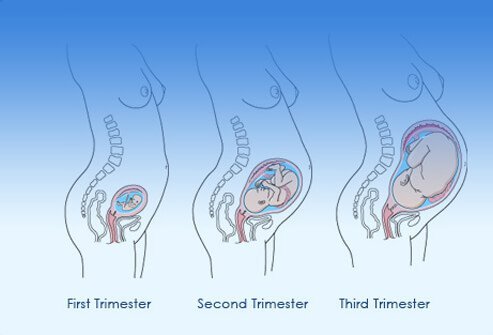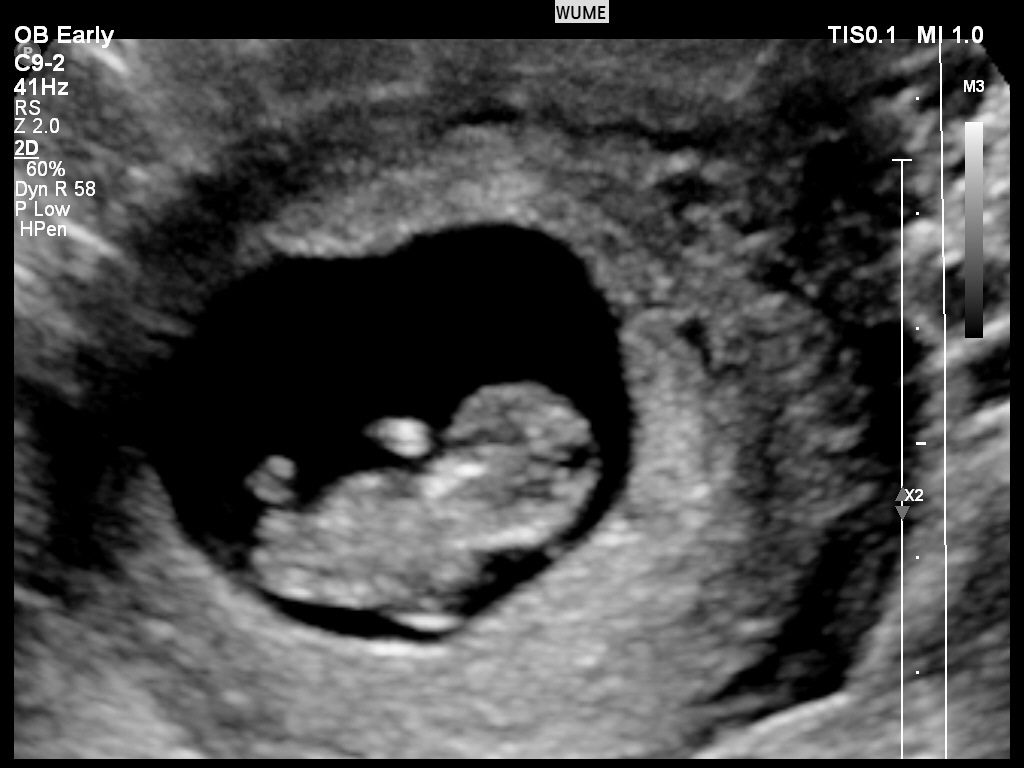Pregnancy Study Guide
Check out awesome, educational VR rooms on Inspirit’s mobile app (available for iOS and Android devices) 🤩
Introduction
Pregnancy is the state of fertilization and development for one or more offspring within a female’s uterus. Pregnancy happens when a sperm fertilizes an egg after it is released from the ovary at the time of ovulation. The fertilized egg then moves down into the uterus, where implantation occurs. If implantation is successful, it results in pregnancy.
On average, a full-term human pregnancy lasts for 10 months. Many factors affect a pregnancy, and we will study these in more detail in this guide!
Pregnancy Timelines
-
The unborn baby spends around 38 weeks in the uterus, but the average pregnancy length is 40 weeks.
-
Pregnancy is counted from the first day of the individual’s last period.
-
Since some people are unsure of the date of their last menstruation due to period irregularities, a baby is considered full term if its birth falls between 37 to 42 weeks of its estimated due date.
Factors that Affect Embryo Growth
An ultrasound scan uses sound waves which create a picture of a baby inside the womb. This acts as a checkpoint to ensure healthy growth of the fetus. The ultrasound generated picture will be displayed on the screen for the physician to analyse, as is seen below.
Mothers play a vital role at the time of pregnancy to ensure optimal growth and development of the embryo. To do so, the following actions can help.
-
Consuming a variety of healthy foods provides nutrition and calcium to the developing embryo.
-
Alcohol, smoking, or any other toxic substances can harm the fetus in any manner and should be avoided.
-
It is important for expecting mothers to have regular prenatal visits to ensure the health of the fetus along with their own health, which is important for pre and post-pregnancy.
What is Labor and Childbirth?
Labor is the process in which the fetus and the placenta exit the uterus, allowing the child to come out of the birth canal. The avereage amount of time it takes to deliver a child is between four and eight hours (though in many cases it can be as short as an hour, or as long as a full day). Every labor experience is different – even from one pregnancy to the next!
Childbirth occurs when the mother pushes the fetus out of her body. In some cases, a caesarean procedure may be required. A cesarean section is a surgical operation that happens at the delivery of a child by cutting the wall of the mother’s abdomen.
Pregnancy Side Effects
-
Vomiting is one of the key symptoms of morning sickness, a common side effect that usually appears within the first four trimesters. Morning sickness is usually one of the first signs of pregnancy
-
Headaches are very common in early pregnancy, and are generally caused due to changes in hormone levels.
-
Bleeding and spotting in the early pregnancy period can also occur. This bleeding is most often the result of implantation. Implantation usually happens one to two weeks after fertilization.
-
Pregnancy can result in a weight gain of around 4 pounds in the initial stages of pregnancy. This weight gain progressively increases and generally becomes noticeable at the start of the second trimester.
-
Stress and hormonal changes in the muscles can cause back pain in the early stages of pregnancy.
-
Pregnancy causes an increase in breast size, which is typically one of the first noticeable signs of pregnancy.
-
High blood pressure can be a symptom of pregnancy, and it often puts both the mother and child at risk for complications.
✅ Conclusion
-
Pregnancy and the birth of a child can be a very special time in a person’s life. The ten months of pregnancy and labor pain and childbirth are filled with many physical and mental changes
-
Many side effects occur alongside pregnancy
-
While normal pregnancies are the healthiest, there are many other types of pregnancy that are classified as more complicated
FAQs
1. At what week do pregnancy symptoms start?
It takes about 2-3 weeks for pregnancy symptoms to start.
2. What is the pregnancy period?
The period between conception and birth. During this time, the baby grows and develops inside the mother’s womb.
3. What are some of the first signs of pregnancy?
Symptoms of early pregnancy can include a missed period, vomiting, bleeding or spotting, back pain, an increase in breast size, and headaches.
4. What are the 3 stages of pregnancy?
The first (0 to 13 weeks), second (14-26 weeks), and third (27-40 weeks) trimesters.
5. How long can a pregnancy last?
Pregnancy lasts for about 280 days or 40 weeks. A preterm or premature baby is delivered before 37 weeks of pregnancy.
6. What is the difference between labor and childbirth?
Labor is the process of pushing the fetus and placenta out of the uterus. Childbirth occurs when the baby exits the body.
We hope you enjoyed studying this lesson and learned something cool about Pregnancy! Join our Discord community to get any questions you may have answered and to engage with other students just like you! Don’t forget to download our App to experience our fun, VR classrooms – we promise, it makes studying much more fun! 😎
Sources
-
Pregnancy. https://flexbooks.ck12.org/cbook/ck-12-biology-flexbook-2.0/section/13.69/primary/lesson/pregnancy-and-childbirth-bio/ Accessed on 1 Dec 2021.
-
Baby due date. https://www.betterhealth.vic.gov.au/health/healthyliving/baby-due-date Accessed on 1 Dec 2021.
-
Medical Definition of Pregnancy. https://www.medicinenet.com/pregnancy/definition.htm Accessed on 1 Dec 2021.


